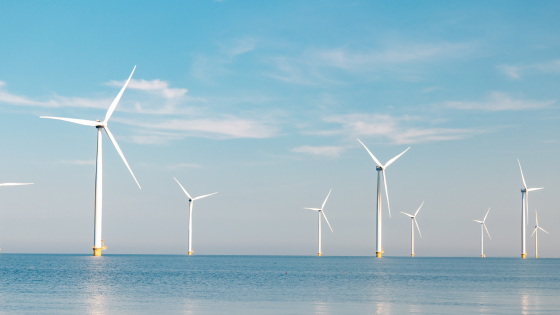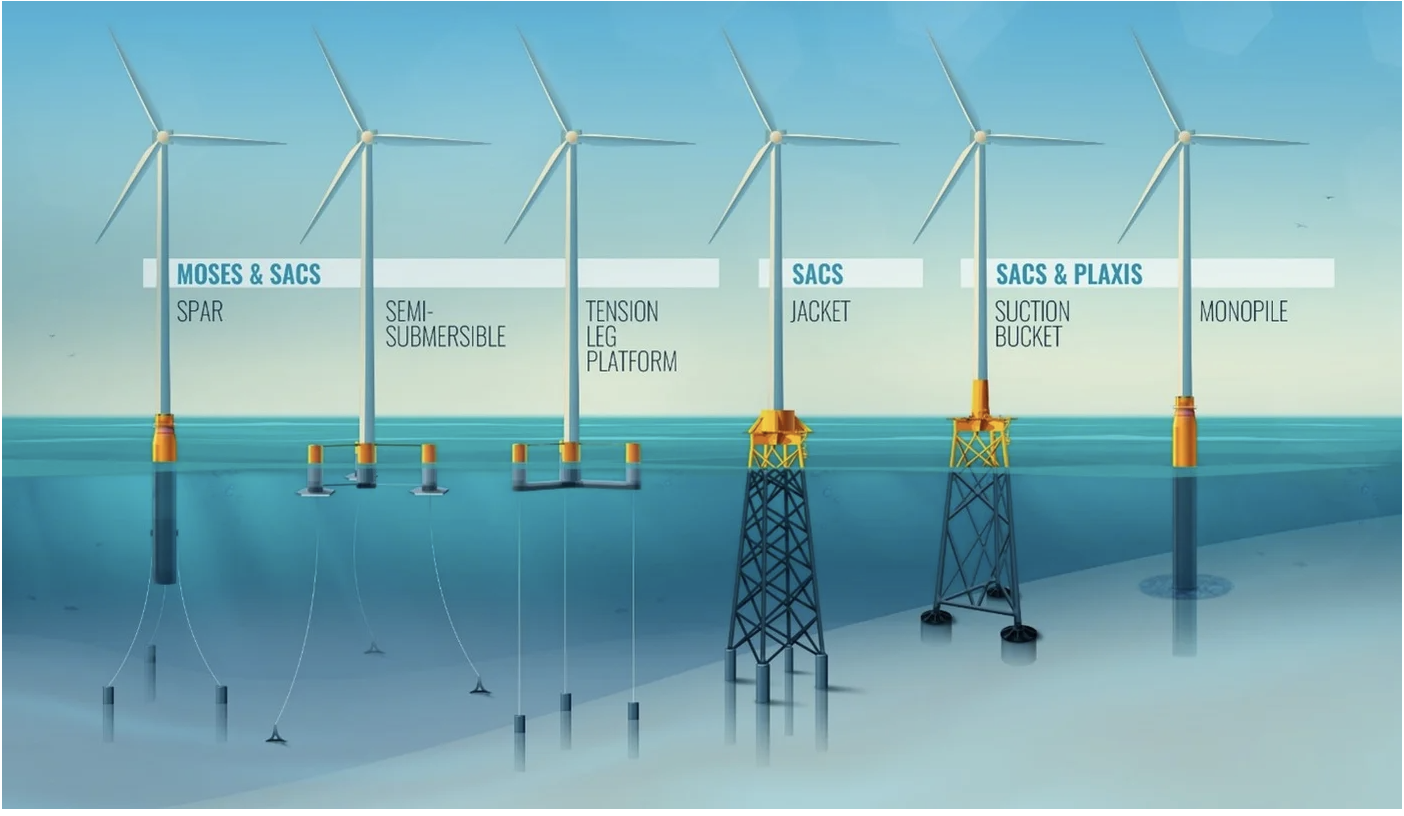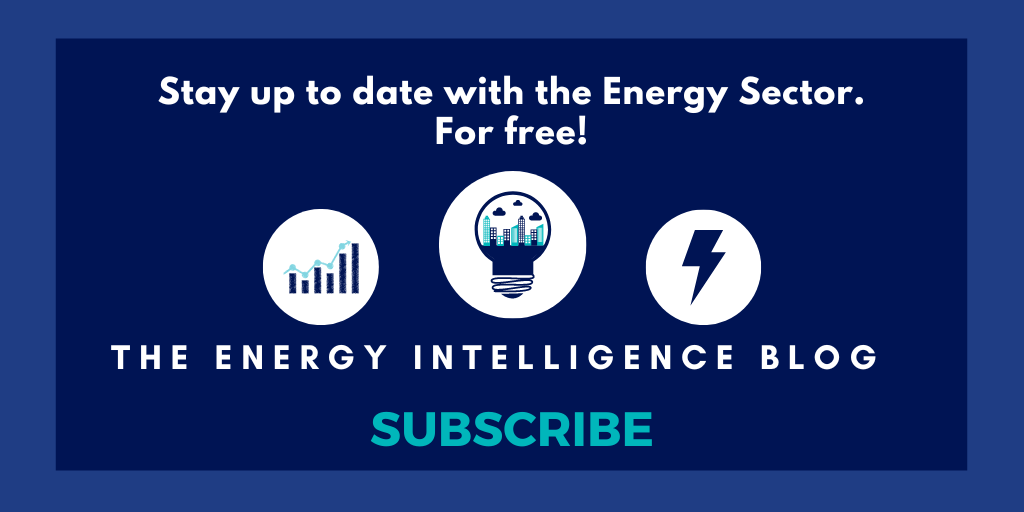At a time when the importance of turning to sustainable energy sources and reducing our carbon footprint is increasingly recognised, offshore wind farms represent a ray of hope amid growing concerns about the energy crisis. They constitute a significant step forward in the search for long-term solutions in the field of renewable energies and sustainable development.
In this article, we take a detailed look at the world of offshore wind farms. We’ll explain the captivating workings of these gigantic wind turbines, exploring everything from rotating blades to energy converters. You’ll understand how they have become a crucial resource for clean, renewable energy. Plus, we’ll look at the distinctions between offshore and onshore wind farms– and much more!
What are offshore wind farms?
Let’s start with the basics. An offshore wind farm is a mega-structure on the seabed that supplies clean, renewable energy. The installation consists of wind turbines, or wind generators, similar to those found on land. The difference is that these turbines are located on platforms or floating structures anchored in deep water.
The turbines in offshore wind farms draw their energy from the sea winds to generate electricity. These winds are considerably more powerful and blow at much higher speeds than on land, due to the absence of natural obstacles to slow them down. What’s more, these marine winds tend to maintain a constant speed.
Offshore wind farms vs Floating offshore wind farms
The distinction between “offshore wind farms” and “floating offshore wind farms” lies in the way the turbines are anchored in the sea.
As we mentioned previously, offshore wind farms traditionally involve turbines fixed to the seabed, using foundations such as monopiles, jackets or tripods that are firmly anchored to the ocean floor. This technology is viable within certain depth limits and under certain seabed conditions, generally in shallow waters, where the turbine foundations can be firmly anchored.
On the other hand, floating offshore wind farms represent an innovative approach, employing turbines mounted on floating structures that are not fixed to the ocean floor. These floating platforms allow turbines to be deployed in deeper waters where fixed foundations are impractical or expensive. They use tension leg platforms, semi-submersible platforms or other innovative floating structures to support the turbines, enabling offshore wind power to be generated in deeper and more remote locations.
The distinction between the two is crucial when considering geographical limitations, as traditional offshore wind farms are confined to areas with shallower waters and suitable seabeds, whereas floating wind farms extend the possibilities to deeper waters previously inaccessible to offshore wind installations.
What’s more, while both types of turbines harness wind power to generate electricity, the engineering and installation processes differ considerably. The development of floating wind technology represents an emerging frontier in offshore renewables, offering opportunities to extend the reach and capacity of offshore wind farms to more diverse locations, with stronger and more consistent winds.
Each approach has its advantages and limitations, and the choice between the two depends on factors such as water depth, proximity to shore and specific seabed conditions, all of which have an impact on the feasibility and cost-effectiveness of deploying offshore wind energy infrastructure.
How an offshore wind farm operates
Offshore wind turbines are installed on separate foundations: fixed concrete bases for conventional wind turbines or floating platforms for more innovative installations. These structures are meticulously designed to withstand harsh marine environments, ensuring stability and reliability in difficult sea conditions.
Once in service, these turbines harness the wind energy and convert it into electricity. The energy produced is transmitted via submerged cables to transformer stations strategically positioned at sea. At these stations, the electricity undergoes a crucial transformation, being converted to high voltage, generally between 33 and 132 kilovolts (kV). This high-voltage electricity is then efficiently transported and distributed through the power grids to reach the end users for whom it is intended.
Offshore wind: How turbines work
The technology used in offshore wind turbines works on the same principles as onshore wind turbines.
- The kinetic energy of the wind sets the blades of the wind turbine in motion.
- These blades are connected to the hub of the wind turbine (also known as the “nose”), and the hub is connected to the wind turbine, enabling the motion to be transmitted.
- The slow shaft rotates at the same rate as the blades, generally at a speed of 7 to 12 rotations per minute.
- The speed is increased considerably by the gearbox, more than 100 times, and transferred to the fast shaft.
- This increased speed is transferred to the wind turbine’s high-speed shaft, which rotates at over 1,500 rpm and transmits it to the wind turbine.
- The wind turbine is responsible for converting the kinetic energy received into electricity.
Did you know? Wind turbines have a braking device that feathers the blades, preventing them from being carried away by the wind. In this way, if the wind is too strong or in a dangerous situation, the turbine remains still.
Location of offshore wind farms
As we’ve seen previously, offshore floating wind farms are located in shallow waters, at an average depth of 27.5 metres, and in areas some 41 km from the coast. They are also located far from shipping lanes, other infrastructure and areas of high ecological value.
This choice was made specifically to avoid the proximity of these features to inhabited areas. This means that the wind farms have no visible or audible impact on humans. It should be noted that offshore wind farms on floating platforms open the door to wind farms even further offshore, in areas of great depth as discussed earlier.
What is the difference between onshore wind farms and offshore wind farms?
Although the operation of the two wind farms may be very similar, there are some notable differences between them.
The main distinction lies in the technical challenge associated with their development, since construction and maintenance in an offshore environment are considerably more complex and require strict compliance with safety measures. In addition, the creation and operation of offshore wind farms require the use of highly specialised logistical resources.
On the other hand, in the offshore environment, electricity generation capacity is considerably higher due to the superiority and regularity of the wind resource compared to the onshore environment. This translates into higher electricity production.
In offshore wind farms, individual turbines can achieve outputs of more than 10 MW, and even up to 15 MW. On land, on the other hand, it is common to find turbines with a unit capacity of around 6 to 7 MW.
It’s important to stress that, because of access constraints during the operational phase, offshore wind farm components need to be more reliable. This is why these components are designed with higher levels of safety than land-based wind farms.
Advantages and disadvantages of offshore wind farms
Offshore wind farms offer multiple benefits for both society and the environment. In what follows, we will look in detail at some of these significant benefits. In addition, we will discuss the associated disadvantages and strategies for mitigating them.
Advantages of Offshore Wind :
- It is an inexhaustible source of renewable energy. It offers a valuable alternative for reducing greenhouse gases, thereby helping to combat climate change.
- It also has the potential to produce a greater quantity of energy than its terrestrial counterparts. The absence of obstacles allows the wind to reach its maximum power at sea.
- Offshore location minimises the visual and acoustic impact and means that very large areas can be used.
- Offshore transport means that wind turbines can reach much larger unit sizes and outputs than on land.
- It reduces the energy dependence of many countries. It allows them to produce enough energy to meet the needs of their own populations on their own territory.
- It creates local jobs and stimulates economic and social growth in the region.
Disadvantages of Offshore Wind :
- Compared with onshore wind farms, offshore wind farms involve significantly higher costs, both for installation and maintenance.
- During the construction phase, the fishing industry may be temporarily affected. This is due to possible restrictions in fishing zones or interference with their activities, resulting in a reduction in their income.
- It is possible for seabirds to collide with the blades of moving wind turbines at offshore wind farms. However, this is less common than in onshore wind farms.
- The construction of foundations and structures can disturb the seabed and the ecosystem, which can affect species living in the area.
- The operation of offshore wind turbines can generate underwater noise. This disturbs marine mammals and can affect their behaviour and migration patterns.
- The underwater structures of offshore wind farms can influence local currents and tides.
As a result of all these factors, setting up an offshore wind farm involves a complex process of applying for permits, obtaining authorisations and carrying out compatibility studies, among other procedures. Let’s take a closer look at these aspects.
What are the requirements for installing an offshore wind farm?
The basic conditions required for the installation of an offshore wind farm include the following:
- A positive environmental assessment.
- Comprehensive studies over several years are required. These studies cover areas such as the impact of the farm on shipping, marine life, migratory birds and other aspects.
- Subsequently, a compatibility study must be submitted to demonstrate that the park fits in harmoniously with other activities at sea.
- Monitoring must be carried out during the construction phase and when the wind farm is commissioned, taking into account all the aspects assessed in the compatibility study.
It should be noted that the offshore wind industry applies innovative technologies to protect the environment. One example is the state-of-the-art noise reduction systems used in the construction of offshore wind farms, such as underwater bubble curtains.
Offshore Wind Energy: Focus on Europe
The European Union is demonstrating a strong commitment to this form of renewable energy, as it plays a key role in achieving environmental targets set at the European level, such as those set out in the Paris Agreement or the Sustainable Development Goals (SDGs). In the first half of 2023, 2.1 GW of new offshore wind capacity was installed, bringing the total capacity of offshore wind farms in the European Union to 32 GW.
In addition, major investments are underway to meet the offshore wind targets set for 2030 and 2050 (60 and 300 GW of capacity, respectively). Belgium, Denmark, Germany, the Netherlands, the United Kingdom, France, Ireland, Luxembourg and Norway have signed the Ostend Declaration, which sets a target of 120 GW for 2030. This target is much more ambitious than that set by the strategy.
According to the European Court of Auditors (ECA), Germany has the most marine capacity of all the Member States. With over 8.1 GW of installed capacity. Other Member States are finding it harder to meet their targets. Let’s take a look at the UK.
The Role of Offshore Wind Energy: The Case of the UK
Offshore wind energy has emerged as a cornerstone in the UK’s renewable energy landscape, playing a pivotal role in the country’s transition towards a more sustainable and low-carbon future. The UK’s strategic positioning amid favourable wind conditions in its coastal regions has propelled it to become a global leader in offshore wind power generation.
Asserting its prominence, the UK ranks as the second largest offshore wind (OSW) market globally. The British Energy Security Strategy (BESS), unveiled in April 2022, outlined an ambitious goal: achieving up to 50 gigawatts (GW) of offshore wind capacity by 2030, incorporating 5 GW from innovative floating technology. This ambitious target not only paves the way for sustainable energy but also forecasts the potential to create up to 90,000 direct and indirect jobs in the UK. This vision is part of a broader framework requiring a substantial £100 billion private investment to propel the nation toward its net-zero aspirations.
Presently, the UK boasts 13.9 GW of fully commissioned offshore wind capacity, marking a remarkable fourfold increase from the installed capacity in 2012. Additionally, there exists a robust project pipeline encompassing approximately 77 GW spread across 80 projects. These projects span various stages—ranging from construction, consented, development, and planned initiatives slated for future seabed leasing auctions.
With a strong commitment to reducing greenhouse gas emissions and meeting ambitious renewable energy targets, the UK has heavily invested in offshore wind farms. These vast arrays of turbines harness the power of wind over the sea, capitalising on consistent and strong offshore winds to generate clean electricity.
The development of offshore wind infrastructure has not only significantly contributed to the country’s renewable energy capacity but has also spurred economic growth. It has created a new frontier of employment opportunities, fostered technological innovation, and attracted substantial investments, nurturing a burgeoning industry that extends from manufacturing to installation and maintenance.
Moreover, offshore wind energy plays a vital role in diversifying the UK’s energy mix, reducing reliance on fossil fuels, and enhancing energy security. It serves as a reliable and scalable source of renewable power, capable of meeting a substantial portion of the nation’s electricity demand. Throughout the past year, gas has remained a key contributor to supplying the majority of the electricity used in Great Britain. It was still true in 2022 as it is the main source of electricity (38.5%) generated. However, we note substantial transformations in other technologies over the course of the year including wind, in second position, which accounted for 26.8% of electricity generated and nuclear, in third, which fell slightly to 15.5%.
The UK’s commitment to offshore wind energy is evident through ambitious targets to further expand its capacity in the coming years. Government support, technological advancements, and collaborations between the public and private sectors continue to drive the growth of this sector, positioning the UK as a trailblazer in harnessing the potential of offshore wind energy on a global scale.
The success of offshore wind energy in the UK not only underlines its environmental benefits but also highlights the transformative power of renewable energy to shape a sustainable future while driving economic prosperity.
Offshore wind power: a promising future
As you can see, offshore wind power is part of a varied, low-carbon energy mix. It is clear that offshore wind power is presented as an excellent pillar for achieving the decarbonisation targets set at the European level. Not only because of its greater energy production capacity than offshore wind farms but also because of the ease with which its components can be transported in the marine environment. In addition, offshore wind power allows countries that do not have the possibility of installing onshore wind farms to do so offshore, thereby reducing or eliminating their energy dependence on other countries.
What’s more, we need to remember that to achieve sustainability goals and combat climate change, we need to look beyond the production of energy itself. The process goes far beyond that. Managing, optimising and making good use of this energy is just as important. That’s why platforms such as Spacewell Energy (Dexma) have come into being, enabling you to monitor and optimise your energy consumption.





